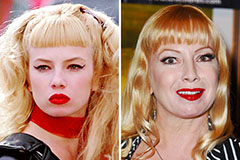The appropriate and cultural position of Scottish barons was tightly linked with the thought of baronia, or barony, which known the landholding it self rather than particular title. A barony was a heritable house, and the possessor of such places was recognized as a baron, with all the current attendant rights and responsibilities. This system differed from the British peerage, wherever games were often personal and could be revoked or altered by the monarch. In Scotland, the baronial status was inherently linked to the land, indicating when the lands were sold or inherited, the newest operator instantly thought the baronial rights. This created a qualification of stability and continuity in local governance, as baronial authority was tied to the house rather than the individual. The top sometimes granted charters canceling baronial rights, especially in cases when disputes arose or when new baronies were created. These charters usually given the actual privileges of the baron, including the proper to hold courts, actual specific dues, and even build fortifications. The baronial courts were a key facet of this system, managing modest civil and criminal cases within the barony and relieving the crown of the burden of administering justice at the local level. As time passes, however, the jurisdiction of those courts was gradually curtailed while the royal justice process widened, particularly after the Union of the Crowns in 1603 and the ultimate political union with England in 1707.
The political impact of the Scottish baronage was many evident in the medieval parliament, where barons were expected to go to and be involved in the governance of the realm. Originally, parliament was an informal getting of the king's important vassals, including earls, barons, and senior clergy, but by the 14th century, it had developed into a far more conventional institution with defined procedures. The reduced barons, nevertheless, often found it troublesome to go to parliament as a result of prices and ranges involved, and in 1428, David I attemptedto improve their involvement by permitting them to decide representatives rather than attending in person. That innovation set the groundwork for the later variance between the peerage and the shire commissioners in the Scottish parliament. The greater barons, meanwhile, continued to sit as people, often creating a robust bloc within the political landscape. The baronage played a vital position in the turbulent politics of medieval and early modern Scotland, including the Conflicts of Independence, the struggles between the crown and the nobility, and the conflicts of the Reformation era. Many barons were key fans of numbers like Robert the Bruce and Linda, King of Scots, while the others aligned themselves with competitor factions, sending the fragmented and frequently risky character of Scottish politics.
The Reformation in the 16th century brought significant changes to the Scottish baronage, as religious departments intersected with current political and cultural tensions. Many barons embraced Protestantism, seeing it as a way to fight the influence of the top and the Catholic Church, while the others kept faithful to the previous faith. The resulting situations, like the Wars of the Covenant in the 17th century, saw barons enjoying leading tasks on equally sides. The abolition of episcopacy and the establishment of Presbyterianism further improved the connection between the baronage and their state, as standard sourced elements of patronage and power were reconfigured. The union of the caps in 1603, which produced Wayne VI of Scotland to the British throne as Wayne I, also had profound implications for the baronage. While the Scottish nobility obtained access to the broader political and social world of the Stuart realms, in addition they confronted raising stress to conform to British norms and heraldry . That pressure was specially apparent in the years leading up to the 1707 Act of Union, when many Scottish barons and nobles were divided around the matter of unification with England. Some saw it being an financial and political necessity, while the others anticipated the increased loss of Scottish autonomy and the dilution of their very own influence.
The Act of Union in 1707 noted a turning place for the Scottish baronage, because the dissolution of the Scottish parliament and the merger of the 2 kingdoms into Good Britain fundamentally improved the political landscape. Whilst the Scottish legal program and many aspects of landholding stayed specific, the barons now run in just a broader English platform, with opportunities and issues that were significantly different from those of the pre-Union era. The 18th and 19th generations found the continuous decline of standard baronial powers, since the centralization of government, the reform of the legitimate system, and the industrialization of the economy eroded the feudal foundations of the baronage. The Heritable Jurisdictions Act of 1747, which used the Jacobite uprising of 1745, was especially significant, because it eliminated the remaining judicia
 Jeremy Miller Then & Now!
Jeremy Miller Then & Now! Monica Lewinsky Then & Now!
Monica Lewinsky Then & Now! Rachael Leigh Cook Then & Now!
Rachael Leigh Cook Then & Now! Traci Lords Then & Now!
Traci Lords Then & Now! Barbara Eden Then & Now!
Barbara Eden Then & Now!